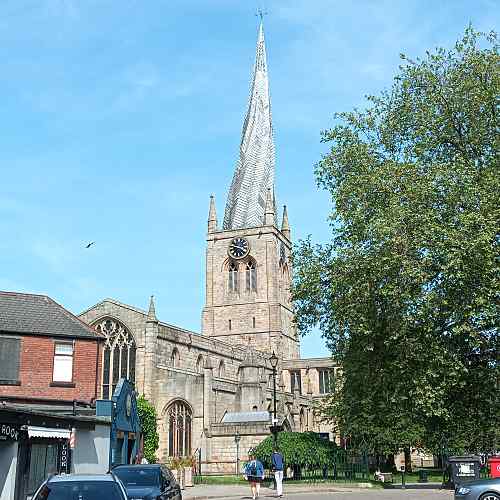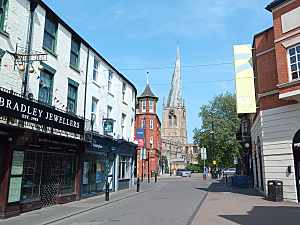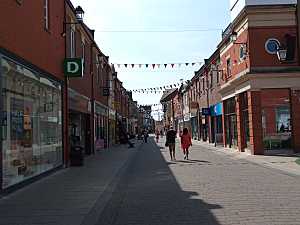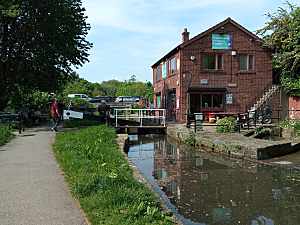CHESTERFIELD
| Population: 88,483 | Grid Reference: SK384712 | Co-ordinates: 53.326,-1.429 |
 |
Just outside the eastern edge of the Peak District is the town of Chesterfield, best known for it's iconic church with the Crooked Spire. Chesterfield is the largest town in Derbyshire (Derby being a city). A Roman Fort was on the site from the 1st century A.D. and the town received it's market charter from King John in 1204. The Battle of Chesterfield in 1266 saw a gang of rebel barons being defeated by a royalist army, part of the Second Barons' War in late 13th century England. Coal mining took place in the area from the early 19th until the late 20th centuries. The Parish Church in Chesterfield is dedicated to St. Mary and All Saints and construction began in 1234 although the present church dates mainly from the 14th century. The spire was built in 1362 and is 228 feet (69m) tall. Over the years the spire became twisted by 45 degrees and leaning by 9.5 feet (2.9m). It is believed that the lack of skilled workers in the wake of the Black Death lead to the use of unseasoned timber in the construction of the church along with the lack of cross-bracing in the spire, something which was not helped when 33 tons of lead sheeting was added to the spire in the 17th century. The twist is also believed to be caused by the sun hitting the south side of the spire causing the lead to expand at a faster rate than on the north side. Church of St Mary's and All Saints with it's Crooked Spire |
Legend
has it that the Devil kicked the Spire out of shape after a Bolsover
blacksmith mis-shod him causing him to leap over the church in pain.
Another legend suggested that the Devil was sitting on the Spire
when the smell of incense caused him to sneeze violently, warping the
Spire out of shape. Various local companies used the Spire on
their logos and the local English Football League team, Chesterfield
F.C. uses the Spire on their crest and are nick-named "The Spirites".
Chesterfield was served by the Chesterfield Canal which linked the town and it's neighbouring coal fields with the River Trent at West Stockwith. Much of the canal was closed after the long tunnel at Norwood collapsed in 1907. Efforts are being made to restore the canal and it is now navigable from the eastern portal of Norwood Tunnel in Kiveton Park to the tidal Trent and an isolated section has also been restored from Chesterfield to Staveley where there is a visitor centre at Tapton Lock.
"Father of the Railways" George Stephenson built the Derby to Leeds Railway which included the Chesterfield Line in 1837. He lived at Tapton House, remaining there until his death in 1848. He is buried at Holy Trinity Church and a statue of him was erected outside Chesterfield Railway Station in 2006.
Chesterfield was served by the Chesterfield Canal which linked the town and it's neighbouring coal fields with the River Trent at West Stockwith. Much of the canal was closed after the long tunnel at Norwood collapsed in 1907. Efforts are being made to restore the canal and it is now navigable from the eastern portal of Norwood Tunnel in Kiveton Park to the tidal Trent and an isolated section has also been restored from Chesterfield to Staveley where there is a visitor centre at Tapton Lock.
"Father of the Railways" George Stephenson built the Derby to Leeds Railway which included the Chesterfield Line in 1837. He lived at Tapton House, remaining there until his death in 1848. He is buried at Holy Trinity Church and a statue of him was erected outside Chesterfield Railway Station in 2006.
 The church from the town centre |
 A shopping street in Chesterfield |
 Tapton Lock Visitor Centre |